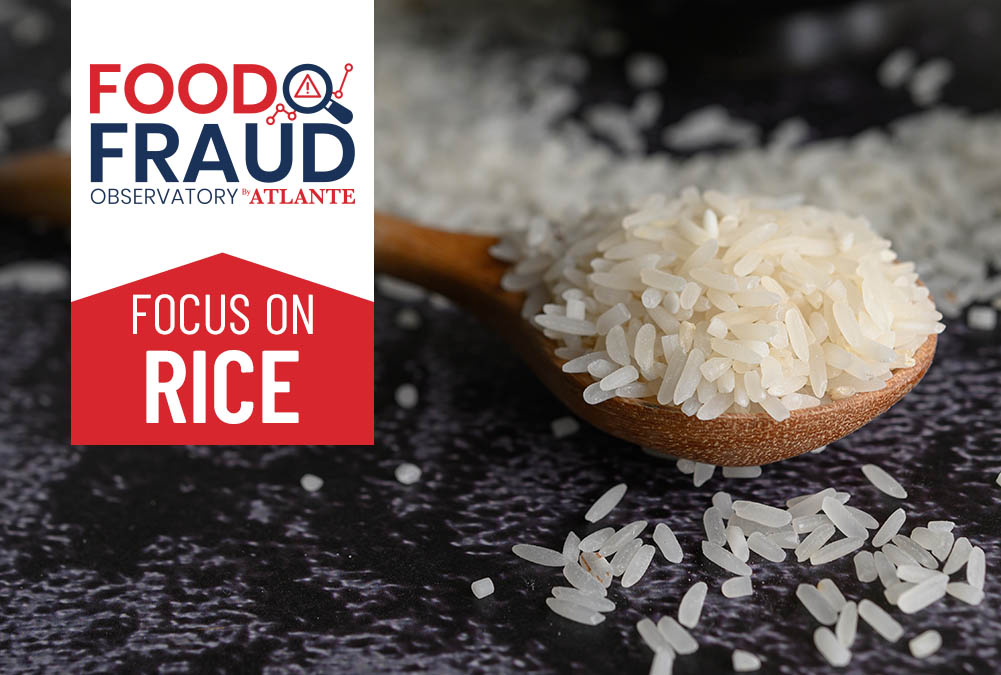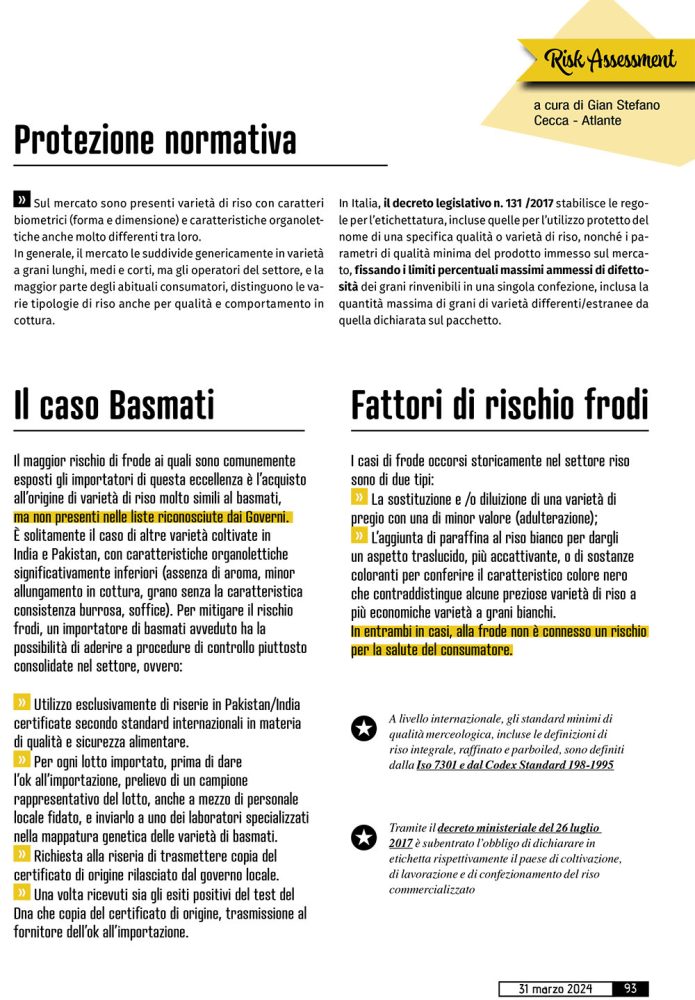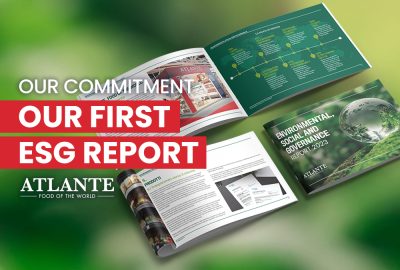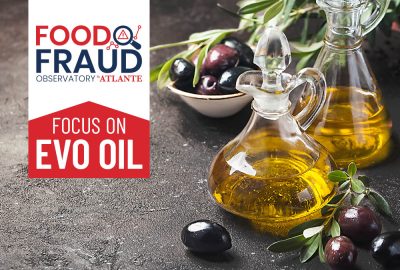Atlante
News
Atlante Food Fraud Observatory: Rice Focus

12 August 2024

Background
The rice market boasts a diverse array of types, all stemming from the botanical species Oryza sativa. These varieties exhibit a spectrum of shapes, sizes, and organoleptic traits. Traditionally categorized into long, medium, and short grains, rice varieties are further discerned by industry experts and everyday consumers based on their distinct qualities and performance during cooking. For instance, varieties like Arborio, Carnaroli, and Vialone Nano absorb sauces and condiments well, whereas others, such as basmati, retain a distinct, refined, and aromatic grain structure.
Internationally and locally, there are many renowned varieties of rice with specific quality characteristics, often linked to indications of origin. Notable examples include traditional Italian varieties (Arborio, Ribe, Sant’Andrea, Vialone Nano IGP, etc.), or protected designations of origin such as Baraggia Rice and DOP Valencia rice (Seni, Bomba, Albufeira). Beyond Europe are varieties such as Jasmine or Basmati rice.
International quality benchmarks are outlined by ISO 7301 and Codex Standard 198-1995. Within Italy, Legislative Decree no. 131/2017 mandates libelling regulations, including the safeguarded utilisation of designated rice variety names, and setting minimum quality thresholds for commercialised goods. Moreover, the Ministerial Decree issued on July 26, 2017, requires producers to specify the country of cultivation, processing, and packaging on the label. This regulatory framework, coupled with stringent control measures and an efficient certification network, fortifies the Italian rice market as one of Europe’s most secure.
Fraud risk factors
Historically, fraud in the rice industry typically falls into two primary categories:
- Adulteration: The replacement or dilution of a high-value rice variety with a lower-value alternative.
- Manipulation: The addition of paraffin to white rice for a translucent appearance or the use of colouring agents to mimic the distinctive black hue of premium varieties.
Thankfully, these deceptive practices carry minimal health risks for consumers.
The Basmati Rice Scenario
Basmati rice stands out for its exceptional qualities, boasting an intense aroma and elegant, elongated grains that extend during cooking. Traditionally cultivated in specific regions of India and Pakistan, Basmati flourishes under favourable soil and climate conditions, influenced by the mighty rivers flowing from the Himalayas.
The governments of India and Pakistan only recognise certain rice varieties as eligible for Basmati labelling, many of which are subject to specific import regulations within the EU. Importing Basmati rice into Europe is subject to customs scrutiny.
The primary fraud risk for Basmati importers lies in acquiring similar rice varieties that lack authentic recognition from authorities. These alternatives may exhibit inferior organoleptic properties, such as diminished aromaticity or limited elongation during cooking.
To counteract the risk of fraud, Basmati importers can implement several measures:
- Exclusively engage certified rice mills in India or Pakistan that adhere to international quality and food safety standards
- Prior to importation, extract a representative sample from the batch and submit it to specialized laboratories for DNA testing
- Obtain a copy of the origin certificate issued by the local government from the rice mill
- Upon securing positive DNA test results and the origin certificate, proceed with the importation.
These protocols serve to ensure the secure and compliant importation of Basmati rice, aligning with requisite quality standards.





